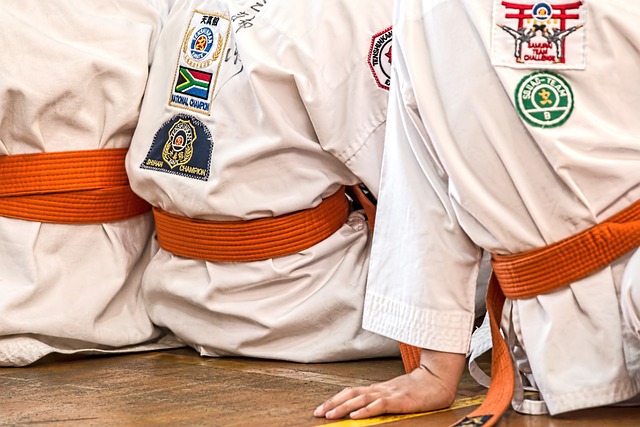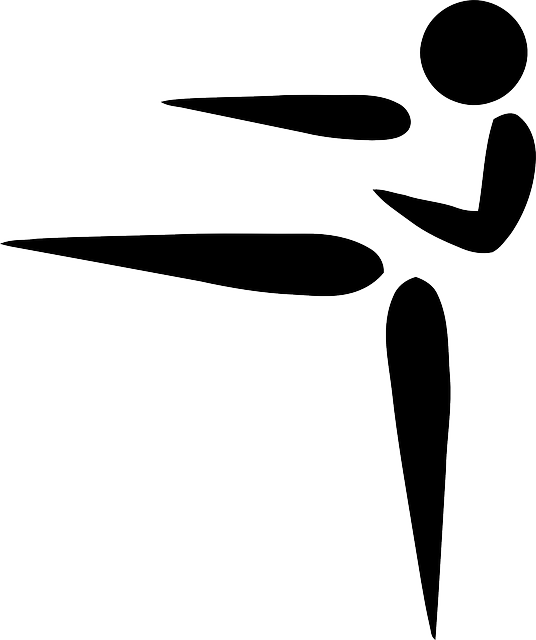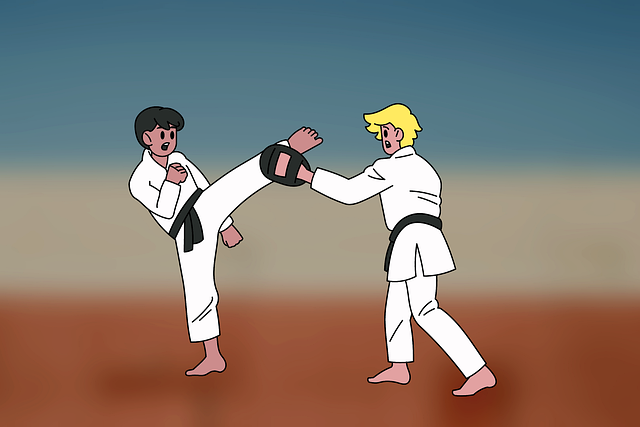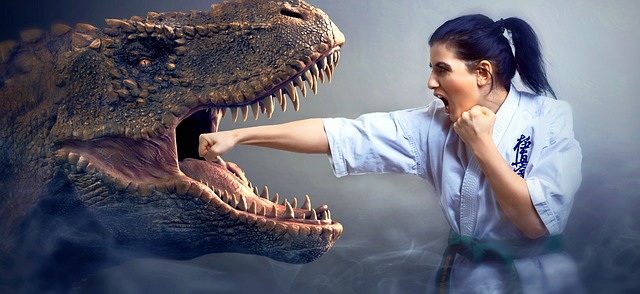Martial arts uniforms, known as "gi," are essential in karate for both practical performance and maintaining tradition. A gi typically made from durable cotton or a blend allows for optimal mobility while symbolizing purity and humility with its standard white color. As practitioners, or karateka, advance, they wear colored belts that visually denote their skill level and dedication within the art. The belt system within karate reflects the karateka's journey and commitment, serving as a tangible emblem of their progress in the discipline. Additionally, protective gear such as gloves, shin guards, groin protectors, mouthguards, and headgear are crucial for safe sparring. These martial arts uniforms and protective equipment are designed to enhance training effectiveness, safety, and the overall learning experience while respecting the traditional aspects of karate. The belt system signifies more than rank; it embodies discipline, perseverance, and respect, which are at the core of karate's philosophy. Martial arts uniforms, therefore, are a key component in maintaining the integrity of karate as both a sport and a cultural practice.
delve into the core components of karate practice, this article sheds light on the essential equipment that underpins the discipline. From the fundamental martial arts uniforms to protective gear and training tools, each element plays a pivotal role in enhancing performance and embodying the spirit of karate. We will explore how these items contribute to the practice, from the traditional karate belt system’s significance to complementary training tools that sharpen technique. Join us as we break down the equipment landscape of this ancient martial art.
- Essential Gear for Karate Practitioners: The Role of Martial Arts Uniforms
- Breaking Down the Traditional Karate Belt System and Its Significance
Essential Gear for Karate Practitioners: The Role of Martial Arts Uniforms

Martial arts uniforms, commonly known as “gi,” play a pivotal role in the practice of karate by ensuring both functionality and respect for the tradition. These garments are designed to facilitate movement, providing practitioners with the mobility needed to execute precise techniques without unnecessary restriction. Typically composed of cotton or a cotton blend, a high-quality gi allows for ease of motion while being durable enough to withstand the rigors of regular training. It consists of a jacket and trousers, often in white, which symbolizes purity and humility. The top is fastened by two sets of buttons and has long sleeves that can be rolled up during more intense practice sessions. The trousers are straight-legged with a drawstring waist to accommodate different body types and ensure they stay in place during dynamic movements. In addition to the traditional white gi, some karate practitioners opt for colored belts as they progress through the ranks of proficiency, each color signifying a different level of skill and dedication. The uniform not only serves as a blank canvas on which one’s journey in karate is visually recorded but also as a reminder of the discipline and respect that are integral to martial arts training. It is an essential piece of equipment for any karateka, providing both a practical tool for practice and a symbol of their commitment to the art.

Practitioners of karate, like athletes in many martial arts, utilize specialized equipment designed to facilitate training and performance. Central to this equipment is the martial arts uniform, commonly known as a gi. These uniforms are traditionally made of cotton or hemp and consist of a jacket, trousers, and belt, each signifying rank within the discipline. The gi serves a practical purpose, allowing for ease of movement while also providing durability to withstand the rigors of practice. It also reinforces the sense of unity and respect among practitioners, as everyone wears the same attire during training and assessments.
In addition to the gi, protective gear is essential for safe sparring and contact exercises. Padded gloves and shin guards are standard equipment to minimize injury from strikes and kicks. Groin protectors and mouthguards are also recommended for men and women respectively, as these areas are vulnerable to impact. Headgear is sometimes used to prevent cuts and bruises, although full-contact karate may employ different protective measures to simulate competition conditions. Regardless of the specific protective equipment chosen, its purpose remains to ensure that practitioners can train effectively and safely, enhancing their learning experience without compromising their well-being.
Breaking Down the Traditional Karate Belt System and Its Significance

Within the discipline of karate, the belt system serves as a tangible representation of a practitioner’s progress and dedication to the martial art. This traditional ranking structure is a hallmark within the realm of martial arts uniforms and comprises a series of belts that denote different levels of skill and understanding. The journey typically commences with a white belt, signifying the beginning of the karateka’s training. As practitioners advance through the ranks, they progressively attain colored belts, each reflecting a deeper mastery of techniques, kata, and philosophy. The belts are often represented in the following ascending order: white, yellow, green, blue, brown (with varying shades indicating different levels), and finally black, denoting the achievement of shodan or first-degree black belt. The significance of each belt transcends mere color; it encapsulates the discipline, perseverance, and respect that are central tenets of karate. Martial arts uniforms accompanying these belts are designed to facilitate movement while providing a universal formality befitting the practice, emphasizing functionality and respect for tradition. The progression through the belt system is not solely about physical advancement but also about personal growth and the cultivation of character in harmony with the principles of karate.

When practicing karate, practitioners, often referred to as karateka, don a traditional martial arts uniform known as a gi. This garment is a staple in the discipline, symbolizing both respect and preparedness. The gi typically consists of a jacket and pants made of heavy cotton or hemp material, designed to facilitate movement without being overly restrictive. It often comes in white, with black belts worn over it signifying rank and progress within the martial art. The top half of the gi fastens up the front with buttons or ties, and the pants are held closed by a sash called an obi. These uniforms not only serve a functional purpose but also reinforce the traditional and disciplined nature of karate, as well as other martial arts where the gi is standard attire. Additionally, karateka may wear protective gear depending on the style of karate being practiced and the intensity of the training session. This safety equipment includes padded gloves called kamae te or makiwara gauntlets, shin guards known as kamaeashi, and groin protection for men. The choice of protective gear is crucial in ensuring that practitioners can spar safely and effectively, allowing them to focus on perfecting their techniques without the risk of injury.
In conclusion, the world of karate is rich with tradition and discipline, practices that are embodied through the essential gear used by karate practitioners. Among these, martial arts uniforms play a pivotal role in both function and significance, reflecting respect for the art and facilitating the free movement necessary for performance. The traditional Karate belt system further underscores progress and mastery within this ancient martial discipline. Understanding the importance of these elements enhances appreciation for the sport and its deep-rooted cultural values. Whether starting on one’s martial arts journey or continuing to advance, the gear serves as a constant reminder of the dedication and commitment required in karate.
